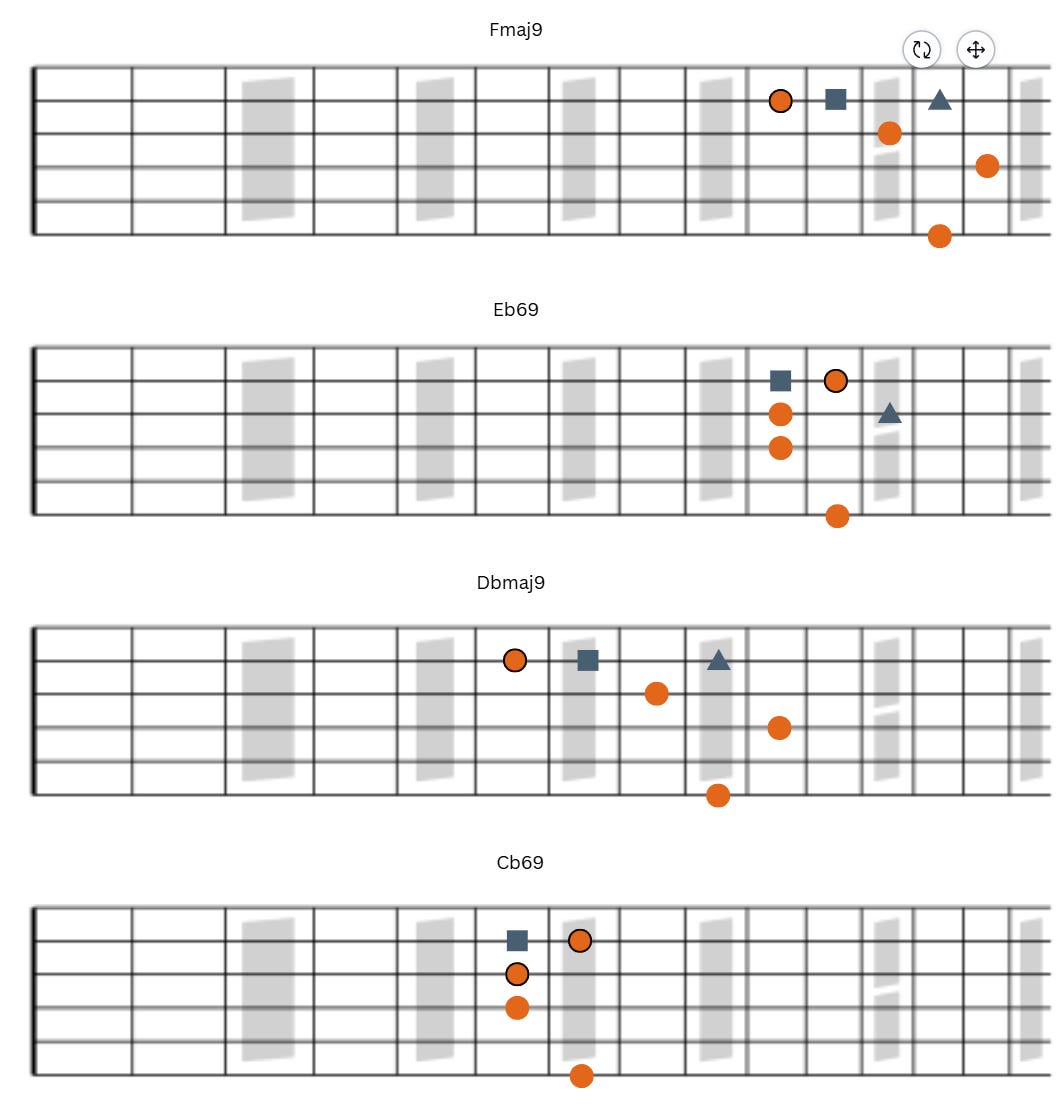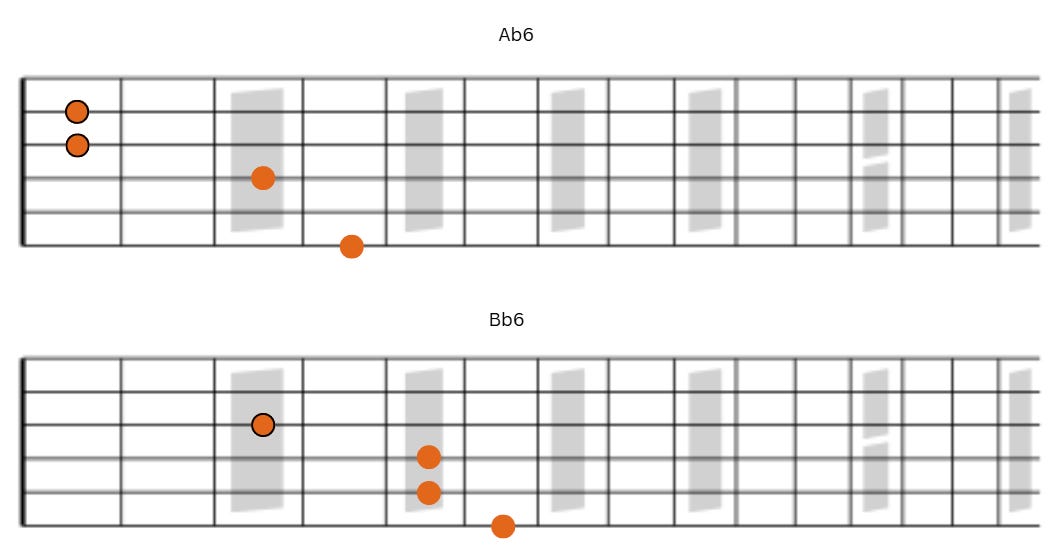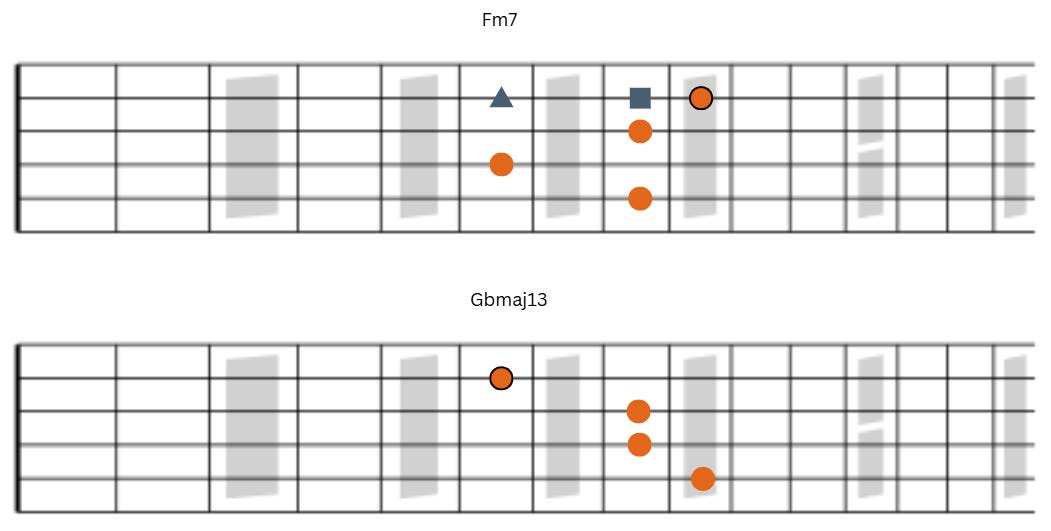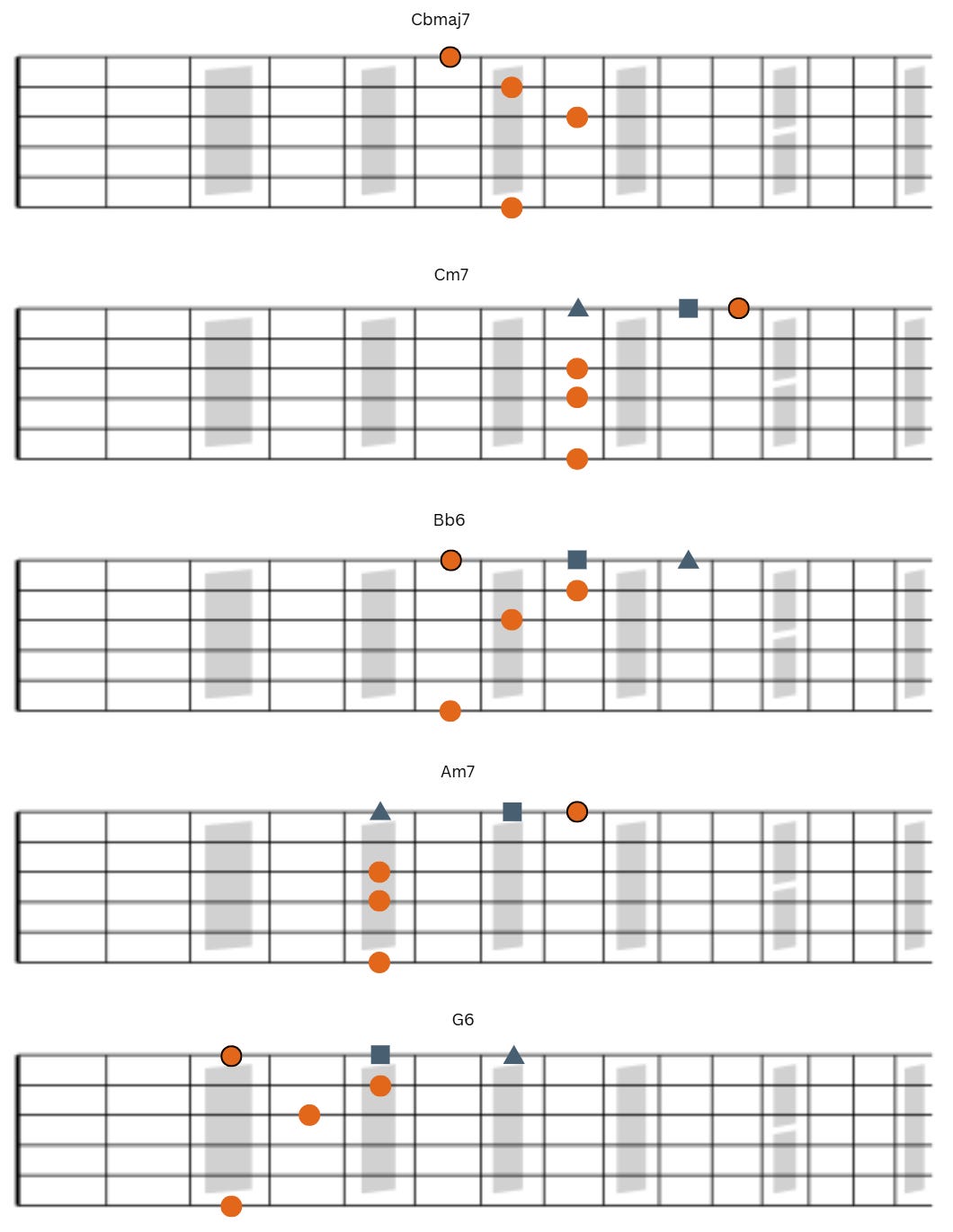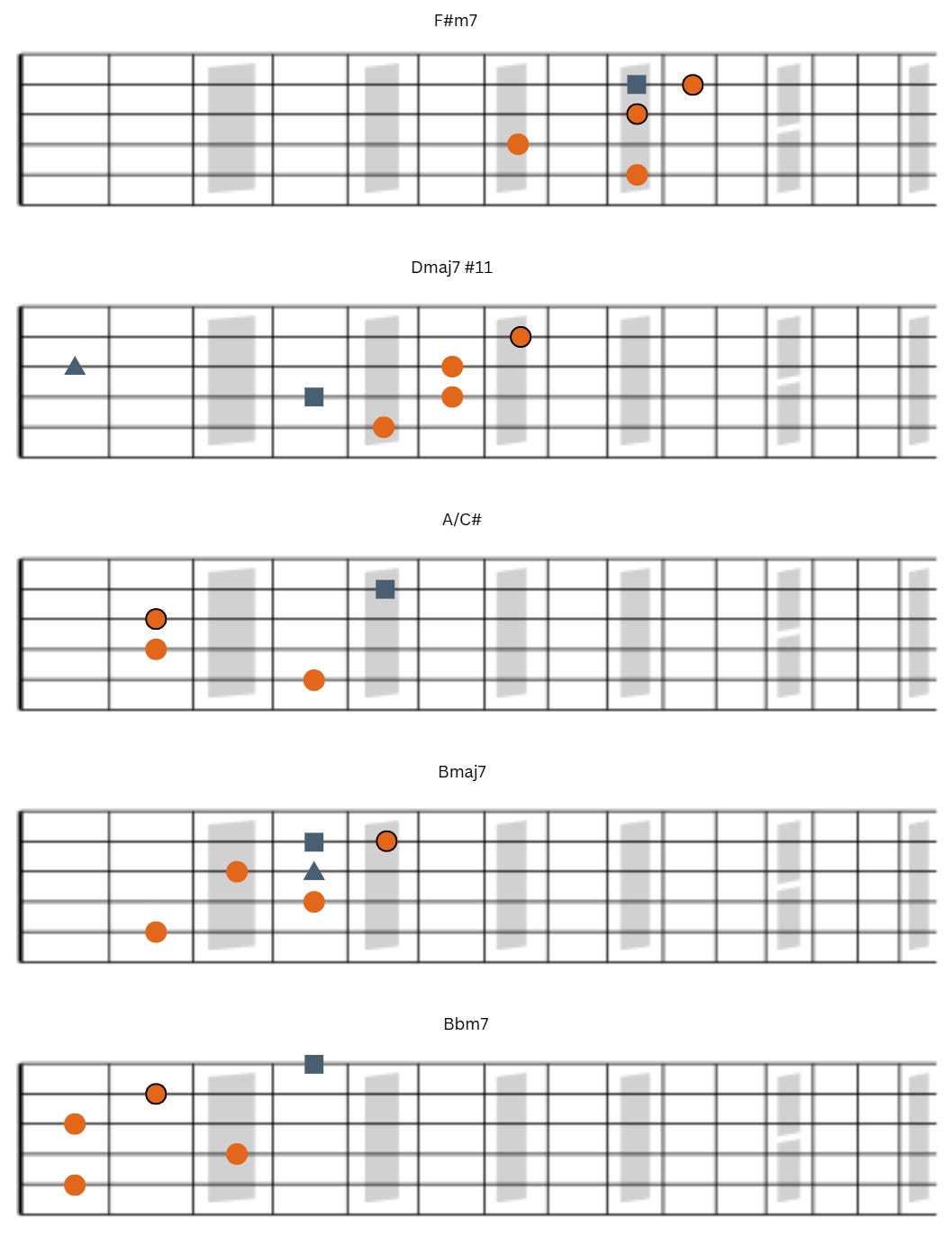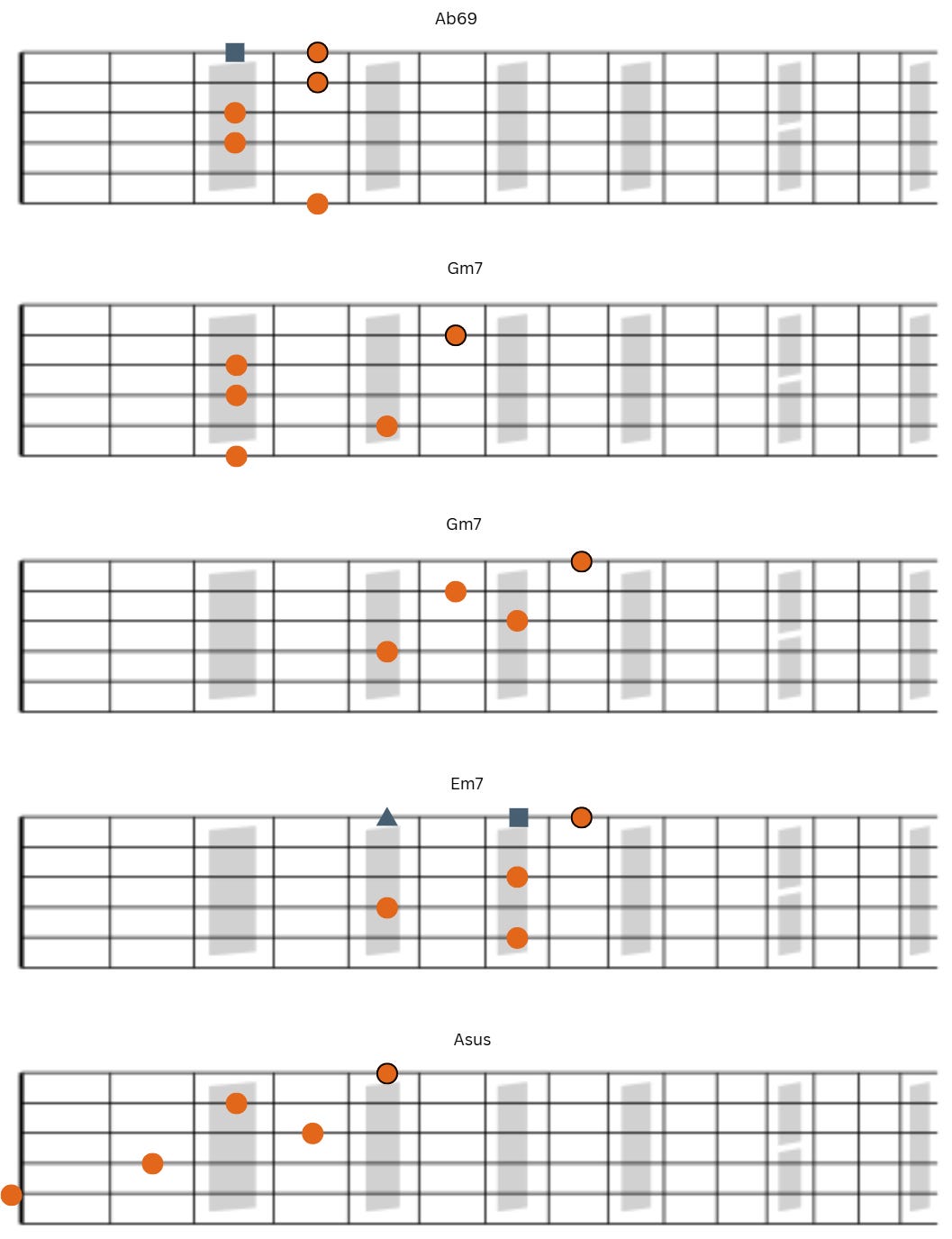A Lotus on Irish Streams
Chord Melody Shapes
Here we’ll look a a series of chord melody shapes. This can serve as a starting point for your own arrangement.
With this type of notation, you’ll want to be familiar with the tune ahead of time. This is how the notation works. The orange notes will give you the primary chord shape that starts out the chord melody. Then the blue square and blue triangle shapes will follow.
Here’s our first sequence. Try thinking in groups here. Fmaj9-Eb69. Then transpose down to Dbmaj9-Bb69.
The Cb69 will move to the same relative shape for Gb69.
Then we’ll end the phrase with Ab6-Bb6.
Next up, we have this beautiful shift from Fm7 to Gbmaj13.
Here we have a back and forth motion between minor and major chord qualities.
Next, we’ll descend down the neck. For the Dbmaj7#11, play the shapes in blue as single-tones leading up to the A/C#.
Now, we’ll approach the end of the form.
Thanks for reading. Please subscribe and visit fretprints.com for more lessons.

